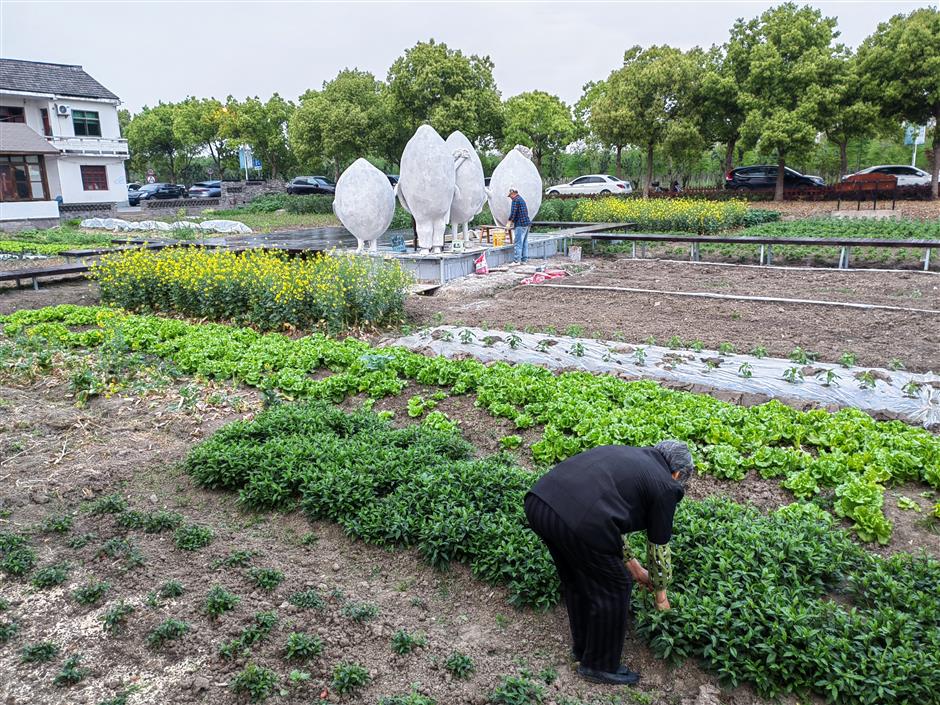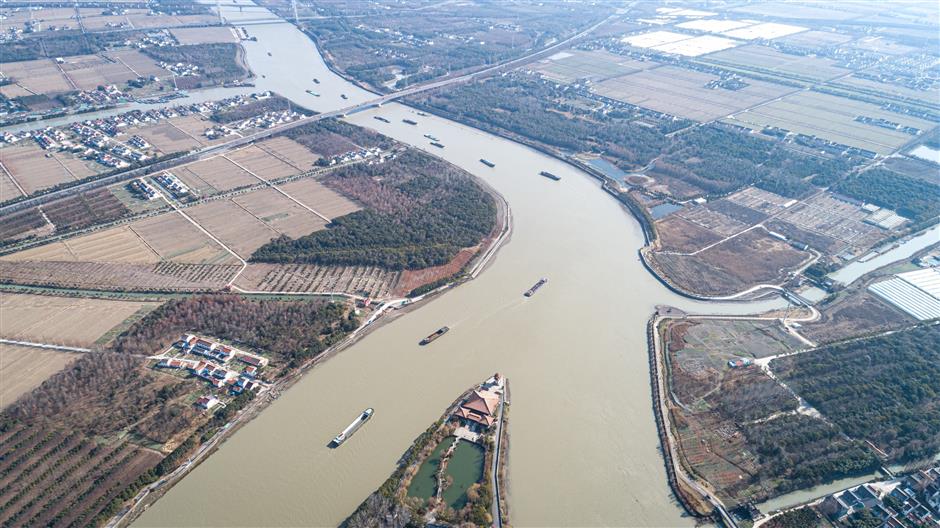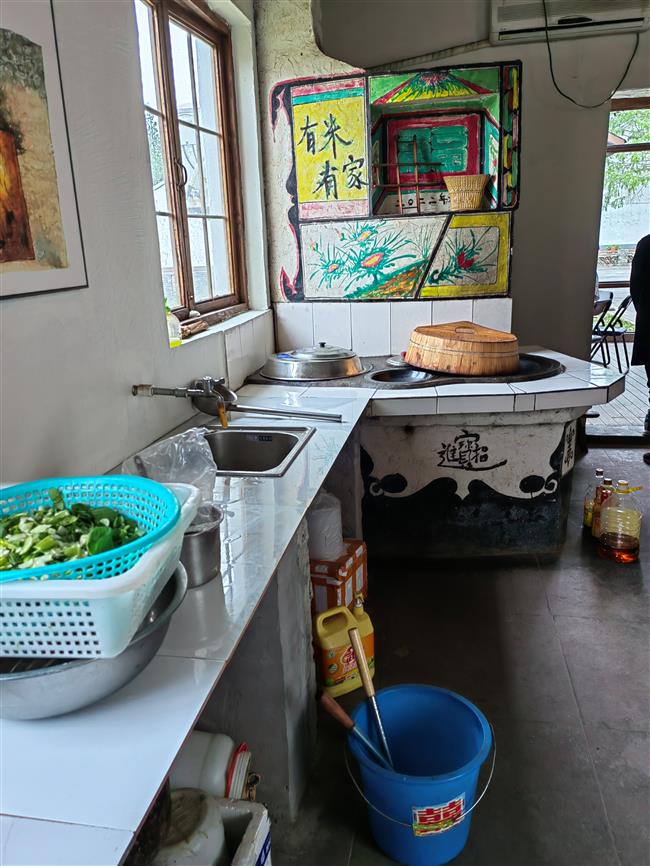一个在黄浦江源头的村庄走在乡村振兴的最前沿 - 2023-05-03

In the background, an artisan puts finishing touches to a sculpture of four oversized grains of rice in the middle of a farmfield in Dongxia Village in Songjiang District.
On first arrival at Dongxia Village, in Shihutang Town, Songjiang District, we were drawn to a sculpture, set on a raised boardwalk in the middle of a farm field, where a worker was putting finishing touches to the work.
At first I mistook the sculpture for an oversized frog, but upon closer look the work turned out to be four oversized grains of rice. The symbolic value of that became more apparent during an ensuing village workshop on "The Chinese Style Modernization" sponsored by the municipal Information Office and Shanghai Academy of Social Sciences.
As SASS researcher Yu Qiuyang explained, in the revitalization drive, villages need to leverage three "rural elements," among which was the creative refashioning of the rural landscape from an aesthetic perspective. Yu had been personally involved in helping design one revitalization project in the district.
Given the esteemed quality of local rice, rice was naturally chosen as a motif to impress urban visitors. For example, the village complex featured a number of services all named "Youmi," literally meaning "having rice." Here visitors could taste simple traditional village meals cooked by a traditional stove using faggots as fuel.
By throwing into enchanting relief the bucolic elements once associated with backwardness and dinginess, the village is emerging as an agritourism center complete with camping facilities, horse-riding, archery, and more.

A bird's-eye view of "Pujiang zhishou," or the beginning of the Huangpu River, where Yuanxie Jing from Zhejiang (lower right) joins with Xietang Jiang (lower left) from the Taihu Lake in Jiangsu, forming one river henceforth known as Huangpu River, the mother river of Shanghai which empties into the Yangtze River 89 kilometers downstream.
The geography of the village means it has plenty of other resources to tap into, such as a complex of tower and museum marking "Pujiang zhishou," or the beginning of the Huangpu River, just one kilometer from the village.
Here, Yuanxie Jing from Zhejiang joins with Xietang Jiang from Taihu Lake in Jiangsu, to form one river henceforth known as Huangpu River, the mother river of Shanghai which empties into the Yangtze River 89 kilometers downstream.
With the village's astute exploitation of the element of being at the "river head," and of its rice production, Dongxia Village has become a prime example of urban-rural integration. By creating business opportunities for young people – some originally from the village – to return to work in business startups or other employment, this part of the city's back garden is morphing into a space shared by villagers and visiting urbanites alike.
According to Yu, Dongxia village is currently one of 112 demonstration villages for revitalization in Shanghai, featuring variously in agritourism, home-stays, and headquarters economy.

Visitors can enjoy traditional village meals cooked on this old-style stove that uses faggots and twigs as fuel.
It's impossible to overstate the significance of rural revitalization for Shanghai, a metropolis which is 90 percent urbanized as far as its permanent residents are concerned.
"Urban revitalization, rather than being confined to villages alone, should aim to effect joint rural-urban development by leveraging urban-rural coordination and the orderly flow of major rural-urban elements," said Yang Chuankai, another SASS researcher, during the workshop.
Yang added that the highly urbanized city of Shanghai, given its potential to lead in rural revitalization through urban-rural integration, could play an exemplary role not only in the national drive for rural revitalization, but also in the global context.
Global experience suggests that when urbanization has reached 50 percent, given the growing attention to rural scarcity and diversity, the process would start of cities "giving back to villages," as former urban reliance on rural resources begins to give way to functional complementarity between cities and villages.
Source: Shanghai Daily
